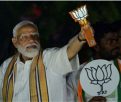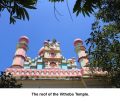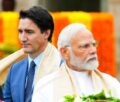Markets fall on signs of renewed financial crisis

A growing debt crisis in Europe and signs of inflation in Asia sent world markets falling on Tuesday.
The sell-off began in Asia, with the Shanghai Composite (China) dropping nearly four percent and the Hang Seng (Hong Kong) falling 1.4 percent. The Chinese market has fallen nearly nine percent in the past three trading days. Most markets in Europe fell between 1.5 and 2.5 percent as well. In the US, the Dow Jones Industrial Average fell over 175 points, or about 1.6 percent.
The market fall was stoked by the fears that countries in Asia, and in particular China, will raise interest rates in response to the growth of inflation—which reached 4.4 percent in October. This would have the impact of slowing down Chinese economic growth, which would affect not only industries throughout Asia, but exporters globally—including in Australia and Europe.
The market reaction came only a few days after a meeting of G20 heads of government last Friday that failed to resolve any of the deep economic problems and imbalances tearing apart the world economy.
There are growing signs of a developing currency war, in which the major powers—led by the United States—are seeking to resolve their problems by offloading them onto their competitors. At the same time, the economic crisis heralds a renewed assault on the working class in every country.
The market fall was stoked by the fears that countries in Asia, and in particular China, will raise interest rates in response to the growth of inflation—which reached 4.4 percent in October. This would have the impact of slowing down Chinese economic growth, which would affect not only industries throughout Asia, but exporters globally—including in Australia and Europe.
In Europe, there are growing signs of a return of the debt crisis that hit the continent in the spring. At that time, the surge in interest rates in Greece and other European countries was seized on to implement a massive bailout of the banks and private investors and initiate severe austerity measures directed at jobs and social programs.
None of the problems that erupted in the spring have been resolved, however. The renewed crisis is centered on Ireland—once presented as an “economic miracle” in Europe. Bond investors have been bidding up yields over the past several weeks. The Irish government has partially nationalized its banks, the balance sheets of which have been devastated by the collapse of the Irish housing bubble. This has called into question the viability of Irish government debt, much of which is held by European, particularly British, banks.
The renewed crisis is centered on Ireland—once presented as an “economic miracle” in Europe.There is growing pressure from bond investors and other European powers for Ireland to accept a bailout, amidst talk of a “contagion” spreading throughout the euro region—and in particular to Portugal, Spain, and Italy.
There is growing pressure from bond investors and other European powers for Ireland to accept a bailout, amidst talk of a “contagion” spreading throughout the euro region—and in particular to Portugal, Spain, and Italy.
Portuguese Finance Minister Fernando Teixeira dos Santos said on Monday, “The risk is high because we are not facing only a national or country problem…This has to do with the stability of the Eurozone and that is why contagion in this framework is more likely.”
EU Council President Herman Van Rompuy warned that the future of the EU was at stake. “We’re in a survival crisis,” he said on Tuesday. “We all have to work together in order to survive with the Eurozone, because if we don’t survive with the Eurozone we will not survive with the European Union.”
German Chancellor Angela Merkel added her own warning, “Everything is at stake. If the euro falls, then Europe will fail. And with it falls the idea of European values and unity.”
Economic growth in Europe is anemic, at just 0.4 percent in the third quarter. However, there are divergences within the continent, as Germany had a relatively higher growth of 0.7 percent, while the “peripheral” countries—including those targeted in the current debt crisis—experienced zero growth or a sharp decline.
The economic crisis is exposing sharp differences between the major European powers over the division of the spoils and the costs of any bailout or default. German demands that private bondholders share a greater portion of any losses in future bailouts—which would mean that the German government would shoulder less of the burden—have provoked increasingly bitter opposition. Indeed, the run up of interest rates on Irish debt was in large part a response by investors to the German position.
Behind these differences, the main concern of all the European governments is to ensure the continued imposition of severe austerity measures directed at the working class. Eurozone finance ministers met Tuesday to discuss the Irish crisis, with some ministers calling for a formal austerity program with strict conditions as a precursor to any bailout.
The Fianna Fáil-Green Party government has already imposed €14 billion in spending cuts since 2008 and is preparing at least €15 billion more in cuts as part of a budget due in early December, shortly after a by-election on November 25. These policies have already led to a drastic deterioration in the living standards of the working class, including collapsing wages and an unemployment rate of 13.6 percent.
On top of the crisis in Europe, there are also growing divisions within the US over the consequences of the Federal Reserve’s policy, backed by the Obama administration, of printing money to purchase US debt. Republican economists issued a letter to Fed Chairman Ben Bernanke on Tuesday warning that policy (known as QE2) risks “currency debasement and inflation.”
In the face of mass opposition, austerity programs have already been implemented throughout the continent—including in Spain, Italy, Portugal, France, and Germany—but further measures are being planned.
On top of the crisis in Europe, there are also growing divisions within the US over the consequences of the Federal Reserve’s policy, backed by the Obama administration, of printing money to purchase US debt. Republican economists issued a letter to Fed Chairman Ben Bernanke on Tuesday warning that policy (known as QE2) risks “currency debasement and inflation.”
In the aftermath of the November elections, the American ruling class is preparing its own round of severe attacks on social programs—outlined in the report last week from commissioners of the bipartisan deficit panel set up by the Obama administration.
The renewed turmoil in the markets makes clear that the financial crisis that erupted in the fall of 2008 reflected a fundamental crisis of the world capitalist system—the effects of which are only beginning to be felt. ( Courtesy WSWS.ORG
-
Book Shelf
-
 Book Review
DESTINY OF A DYSFUNCTIONAL NUCLEAR STATE
Book Review
DESTINY OF A DYSFUNCTIONAL NUCLEAR STATE
- Book ReviewChina FO Presser Where is the fountainhead of jihad?
- Book ReviewNews Pak Syndrome bedevils Indo-Bangla ties
- Book Review Understanding Vedic Equality….: Book Review
- Book Review Buddhism Made Easy: Book Review
- Book ReviewNews Elegant Summary Of Krishnamurti’s teachings
- Book Review Review: Perspectives: The Timeless Way of Wisdom
- Book ReviewNews Rituals too a world of Rhythm
- Book Review Marx After Marxism
- Book Review John Updike’s Terrorist – a review
-
-
Recent Top Post
- Commentaries Record Pentagon spending bill and America’s hidden nuclear rearmament
-
 CommentariesNews
Ides of trade between India and Pakistan
CommentariesNews
Ides of trade between India and Pakistan
-
 Commentaries
How sustainable is the rhetoric of India-China Bhai-Bhai
Commentaries
How sustainable is the rhetoric of India-China Bhai-Bhai
-
 CommentariesTop Story
New Set of Diplomatic Strains with Canada
CommentariesTop Story
New Set of Diplomatic Strains with Canada
-
 News
Ratan Tata’s Legacy
News
Ratan Tata’s Legacy
-
 Commentaries
India’s Strategic Push on the World Stage
Commentaries
India’s Strategic Push on the World Stage
- Commentaries Veils of Resistance
- Commentaries Ensuring Safety for Women Healthcare Workers
-
 CommentariesTop Story
Palestinians at the cross- roads
CommentariesTop Story
Palestinians at the cross- roads
-
 CommentariesTop Story
While Modi professes concern for the jobless, “his government’s budget escalates class war”
CommentariesTop Story
While Modi professes concern for the jobless, “his government’s budget escalates class war”
AdSense code
















